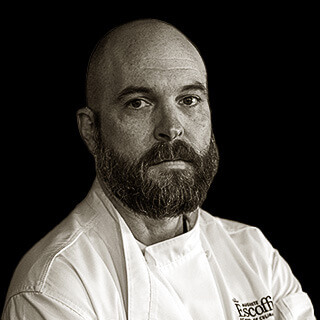Listen to This Article:
While it makes for impressive television, knife skills go beyond speed and flair. If you want to work in a professional kitchen, it’s important for you to understand the difference between mincing and dicing, and the reasons you would choose one over the other, as well as which knife to use.
That’s why knife skill classes are a foundational part of a culinary school curriculum. Let’s break down the top ten knife cuts every professional cook and chef should know.
1. Julienne
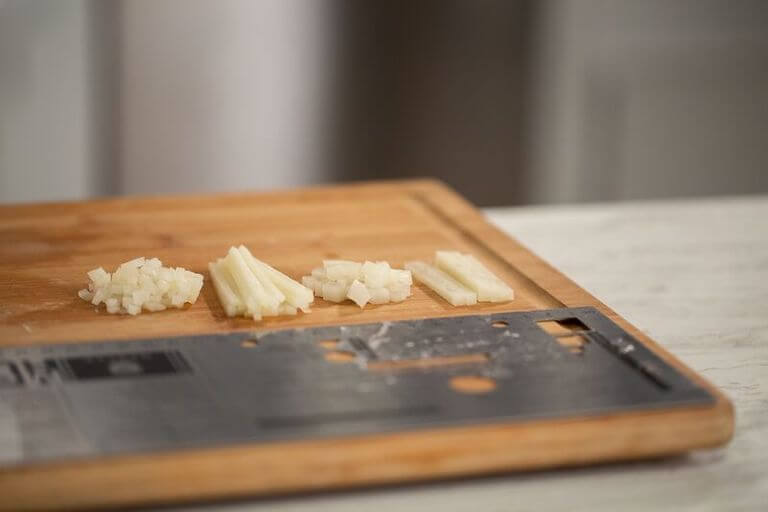
The julienne cut is good for vegetables that need to be uniform in size and cook quickly.
The julienne cut is known as the matchstick cut because of an ingredient’s resemblance to the wooden part of a match after being cut. These are essentially thin planks that are cut evenly and meticulously. The size for the julienne cut as taught at Escoffier is 2 ½ inches long, 1/8 inch wide, and 1/8 inch high. A fine julienne is even smaller, at the same length but 1/16 of an inch in the other dimensions.
This precise cut is useful for ingredients that need to be uniform in size and that can cook quickly, like in a light sauté. Because the julienne cut calls for precision, it’s recommended to use a quality utility knife equipped with an ultra-sharp blade, and execute this method on firmer produce such as root crops, apples, and carrots. That said, many chefs prefer to use their chef’s knife for julienne cuts, as well.
2. Brunoise
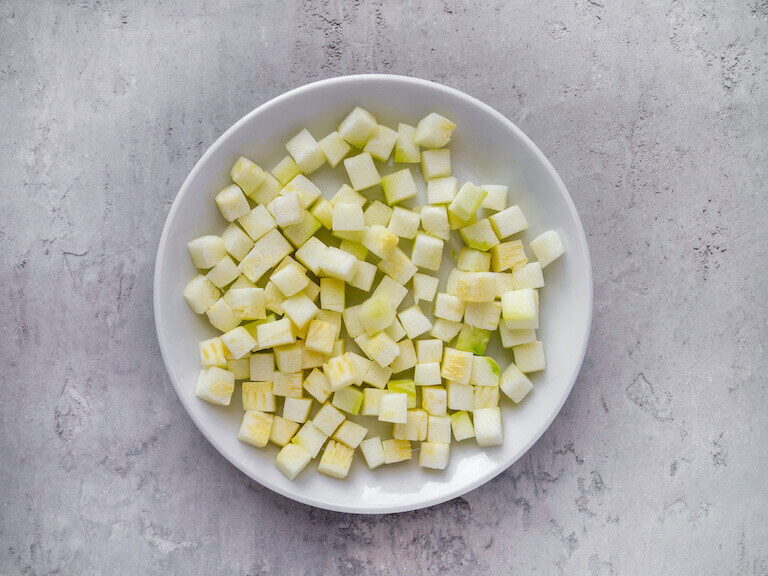
The brunoise cut is the smallest dice and is good for aromatic dishes.
In French, brunoise (broon-WAHZ) translates to “tiny cubes,” and it begins with the classic julienne cut. Professional cooks start by delicately bundling the julienned strips together, then delicately dicing them into 1/8-inch cubes. It’s imperative to stay precise with these measurements, as a smaller cut could quickly transition into a mince.
Traditionally, a brunoise cut is used for intensely aromatic dishes like hearty soups, stews, and stocks. It also makes a wonderful garnish when par-boiled.
3. Batonnet
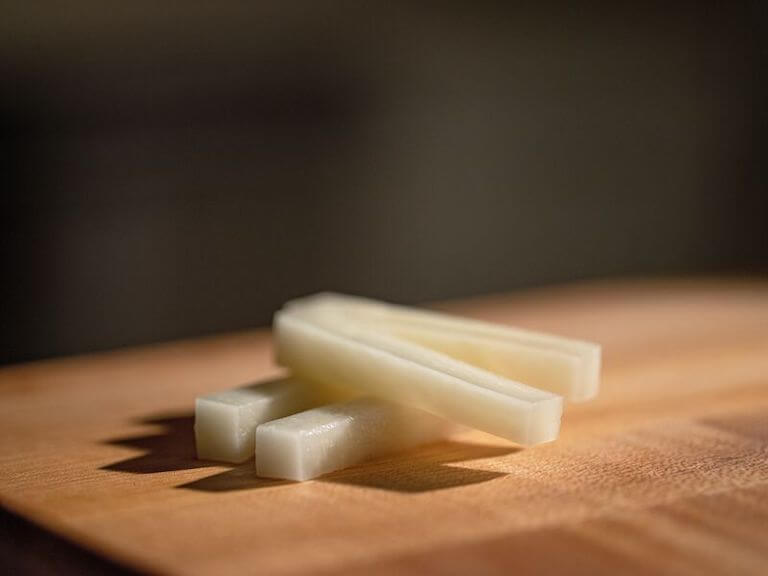
The batonnet cut is most often used for vegetable sticks and stir fries.
The batonnet (bah-toh-NAY) starts as a rectangular cut that’s also used for the julienne. It’s commonly used for foods like French fries. This cut generates a much thicker, squared-rectangular shape. The exact batonnet measurements are ¼-inch by ¼-inch by 2 ½ inches.
In addition to French fries, the batonnet is an optimal cut for lavish veggie platters and stir-fries. It is also one of the most popular cuts when it comes to presentation, as it’s slightly more durable and easier to handle than the classic julienne cut.
4. Dice
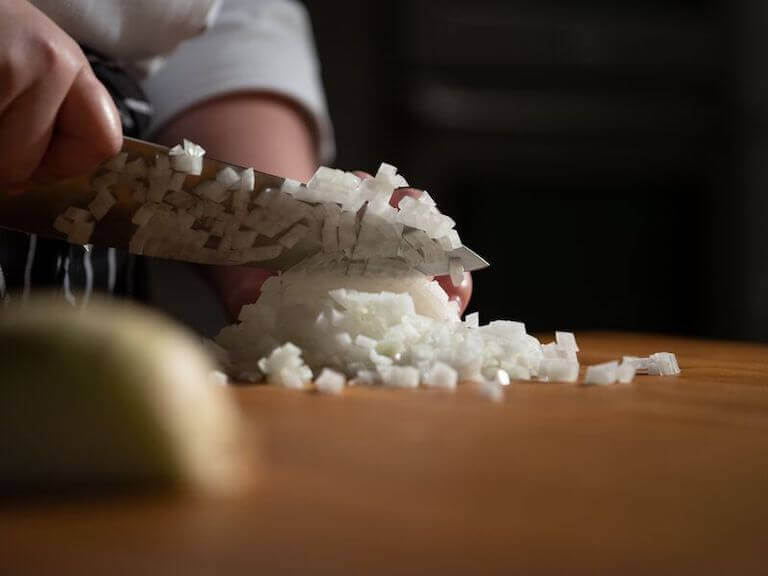
The dice is the most widely used knife cut.
For a professional chef, mastering the perfect dice is critical because it’s one of the most widely used knife techniques. “Small dice” is usually food cut into ¼-inch square pieces. “Medium dice” is around ½ inch, and “large dice” land in the 3/4- to 1-inch range.
To accomplish the most desirable dice, it’s easiest to start with a batonnet (plank) cut first, lining your ingredients up crosswise, and carefully cutting into cubes that match the preferred small, medium, or large measurements. A small dice can be good for a salsa or sauce, medium for soups and casseroles, and large for roasted dishes.
5. Bias Cut
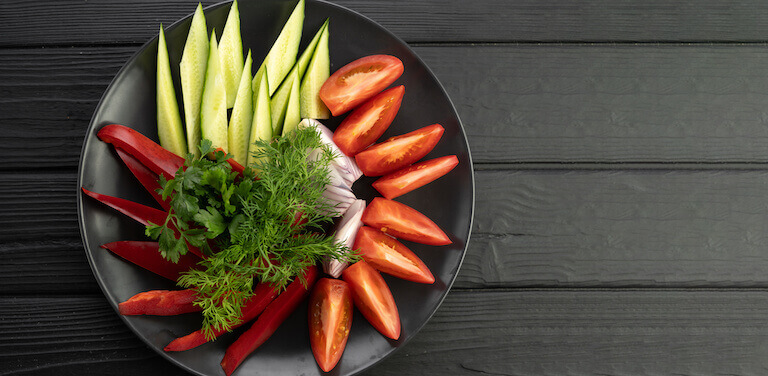
The bias cut is made at an angle that’s neither with nor against the grain of a food.
A bias cut refers to slicing foods at an angle rather than perpendicular to its natural shape or grain. This technique is often used for aesthetic purposes, as it creates elongated and visually appealing slices. Additionally, bias cuts can alter the texture of certain foods, such as meat or vegetables, making them more tender or providing a different sort of mouthfeel.
Unlike many of the cuts on our list, a bias cut doesn’t have a standardized size and will depend more on the intent of the dish and the size of the food you’re cutting.
6. Mince
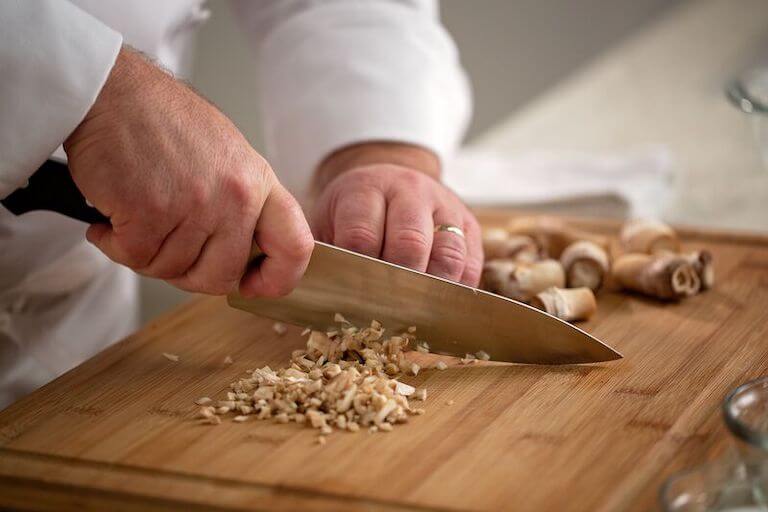
Mincing is a useful cut for aromatic root vegetables whose flavor dissipates quickly into a dish.
Mincing is the smallest knife cut that chefs use, macerating ingredients into tiny pieces that are often intended for specific garnishes and sautés. As Escoffier Online Culinary Arts Chef Instructor Anthony Frazier puts it, “Typically when mincing, chefs cut in a rocking motion using the natural curvature on the belly of the knife while leaving the tip of the knife on the cutting board and manipulating the heel of the knife to mince the product into fine cuts.”
Mincing is useful for aromatics like garlic and ginger along with other aromatic root vegetables. These ingredients are made so tiny that they usually break down quickly into what you’re cooking, yielding an abundance of flavor and enticing aroma.
An alternative to the mince would be a fine Brunoise, which is standardized to very small 1/16” cubes.
7. Oblique
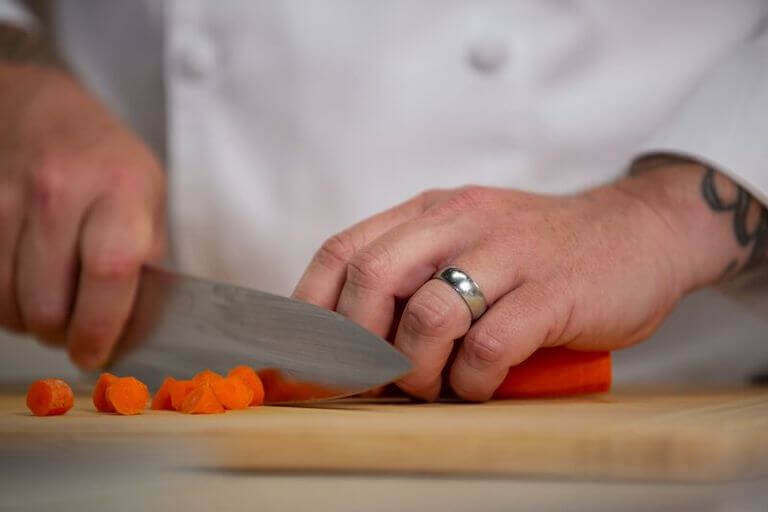
The oblique cut produces more surface area by cutting at a diagonal.
The oblique cut, often referred to as a roll cut, is typically used with long vegetables like carrots or zucchini. The cut produces two different angles but chunks of uniform size; the angle helps expand the surface area to better absorb flavors and cook faster, and the uniformity helps ingredients cook more evenly.
Using a carrot as an example, make the cut by holding the carrot with one hand and holding the knife at a 45-degree angle with the other. Cut the carrot on the bias, or at a diagonal angle, then roll the carrot for a quarter turn and make another cut. Thus cut is useful for a stir-fry or a stew, or even as a way to cut a baguette.
8. Chiffonade
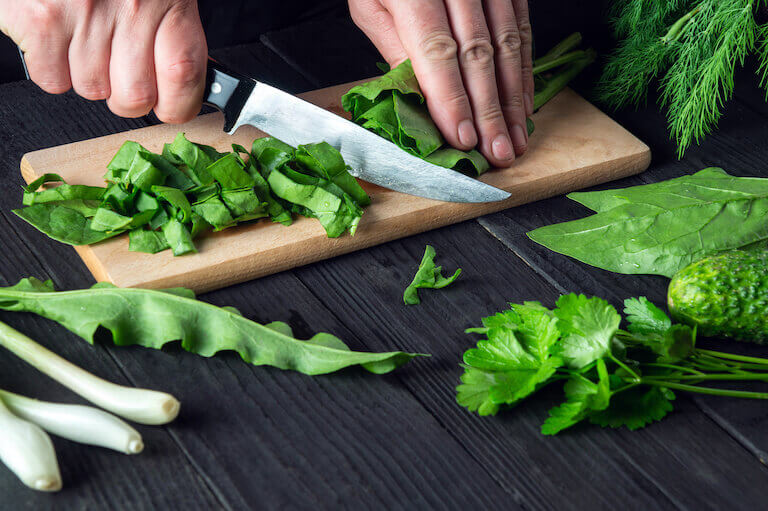
The chiffonade produces elegant ribbons.
If you’ve ever feasted on a savory meal topped with elegant ribbons of basil, chances are, the cook employed the chiffonade cut. This knife technique is used to cut aromatic herbs and certain types of leafy greens into dainty little ribbons—although the textbook definition of “chiffonade” translates to rags. In the culinary world, ribbons sound a bit more appealing.
The most effective way to try the chiffonade cut is by tightly rolling up your desired herbs or greens into a bundle and softly slicing them into thin strips.
9. Lyonnaise
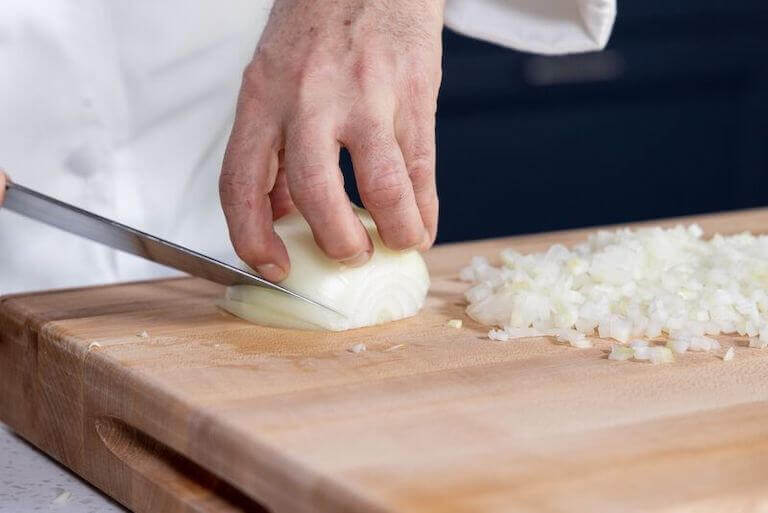
A lyonnaise cut produces long, thin strips.
The lyonnaise (lee-oh-NAYSE) cut is usually associated with onions and potatoes. It’s a cut that produces long, thin strips of onion (or potato, etc) for recipes like French onion soup or those that need caramelized onions. Lyonnaise potatoes and scalloped potatoes are two more common uses.
To make the lyonnaise cut, start by cutting an onion in half and then turning it so one of the cut ends faces you. Starting near the bottom, cut at an angle and continue making cuts into the onion—think of it like fanning out from the bottom all the way around, or imagine wheel spokes—until reaching the top of the onion. Turn the onion so it’s flat against the cutting board, and start cutting again.
10. Tournée
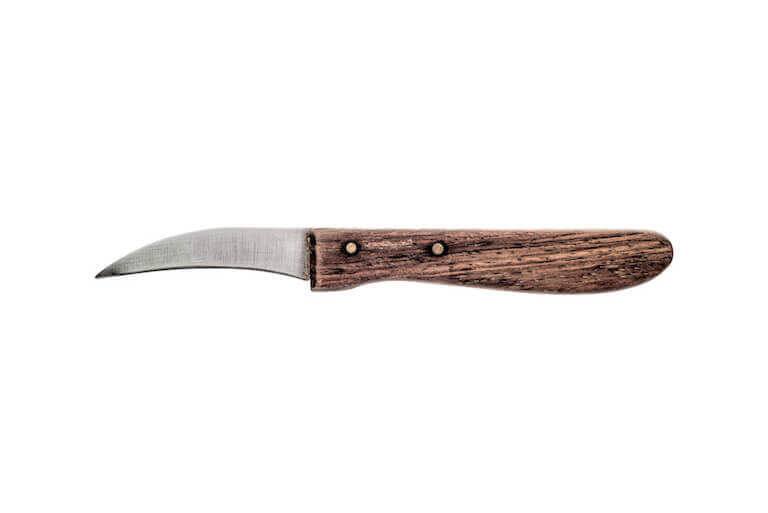
A tournée cut is usually achieved with a tournée knife.
An aesthetically appealing and versatile technique, the tournée cut essentially reshapes a food into an oblong football-like shape. The name comes from the French word for “turned,” named so because you have to physically turn the food in your hand to prepare it this way.
Tournée cuts are typically achieved with a tournée knife (also sometimes called a bird’s beak knife), but you can also use a paring knife in a pinch.
Start With Credible Knife Skill Classes
When you’re a professional chef or cook, it’s essential to fully comprehend the litany of knife cuts in a professional knife skills class. And when you’re newer in the industry, vying to build credibility in the kitchen, a full grasp of each type of knife cut and its correlating technique can ensure your dishes are cooked evenly throughout, plus increase your efficiency and safety as a culinary professional.
Through Escoffier’s culinary arts programs, students can discover fundamental knife skills, the concept behind mise en place, cutting techniques, and knife safety.
If you’re ready to discover foundational knife principles (and more!) through culinary school, contact us today to get the ball rolling!
LIKE THIS ARTICLE? YOU MAY ALSO LIKE:
- What is Mise en Place and Why is it so Important for Chefs?
- The Complete Glossary of Cooking Terms for the Culinary Arts
- 10 Tools You Need In Your Chef Utility Belt
*Information may not reflect every student’s experience. Results and outcomes may be based on several factors, such as geographical region or previous experience.
This article was originally published Sept. 2, 2022, and has been updated.

